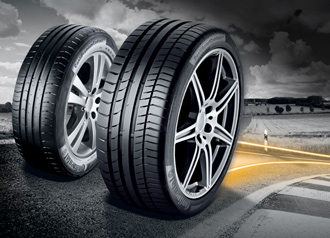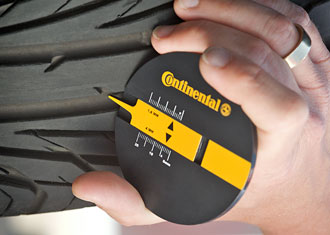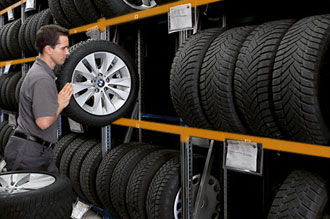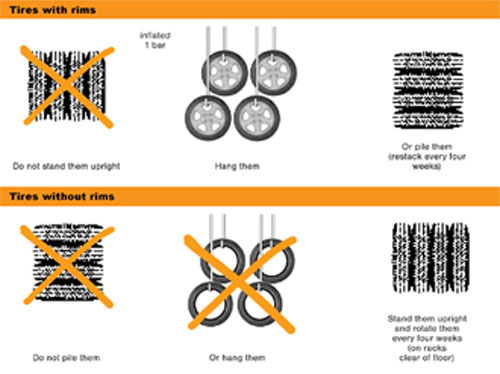
When you replace your tires tire is entirely up to you. However, you will need to consider things like how you use them, their maintenance history, storage conditions, visual inspections and their dynamic performance.
Tires need to be replaced for a number of reasons, including tread worn down to minimum depth, damage in the form of punctures, cuts, impacts, cracks, bulges, under-inflation and overloading, etc. That's why your tires, including your spare, must be inspected at least every two weeks.
We recommend fitting the same type of tires (brand and tread pattern) on all four wheels, as this leads to significantly better handling and braking performance in all driving conditions. You should always consider consulting a tire service professional with any questions about tire service life.
Tire pressure
 A major role in the service life and safety performance of your tires is played by tire pressures. They are determined individually for every vehicle model, by the tire and vehicle manufacturers. To find the correct tire pressure for your vehicle refer to the owner´s manual, inside the fuel tank flap, or inside the car door or glove compartment.
A major role in the service life and safety performance of your tires is played by tire pressures. They are determined individually for every vehicle model, by the tire and vehicle manufacturers. To find the correct tire pressure for your vehicle refer to the owner´s manual, inside the fuel tank flap, or inside the car door or glove compartment.
You will reduce the tires' ability to grip the road properly if they are under- or over-inflated. Not only does this cause excessive or uneven tread wear, it has a substantial influence on handling, which can be particularly dangerous when cornering at high speeds.
If the inflation pressure is not adequate for the load being carried, the tire temperature increases due to increased flexing. Excessive temperature can result in structural damage to the tire and even to tire failure.
We recommend:
You check your tire pressures every two weeks and adjust as necessary. Remember, only check your tires when they are cold, not when they are still warm from driving. And don't forget to check your spare or emergency/temporary spare tire, since you never know when you may need it.
Tread depth

Pay particular attention to the depth of the tread on your tires - it has a major impact on their overall performance. In most countries tread depth is governed by law, but should be no less than a minimum of 1.6 mm1. If you drive with less tread, you risk the possibility of a fine or penalty points on your driver’s licence.
Tread Wear Indicators (TWI´s) are raised bars in the main longitudital tread grooves, distributed evenly around the circumference of the tire, which become level with the rest of the tread pattern once the legal minimum tread depth of 1.6 mm is reached. Continental's winter tires have additional tread wear indicators which show when the tread depth reaches 4 mm, because winter performance drops off substantially once this tread depth is reached.
We recommend:
Since worn tires greatly increase the risk of aquaplaning and impair wet braking performance, we strongly urge drivers to change their tires before they reach the minimum legal tread depth.
A good rule of thumb to follow: change summer tires when they have 3 mm and winter tires when they have 4 mm of remaining tread (in Austria, winter tires must have at least 4 mm of remaining tread when the period for mandatory winter equipment begins).
1 Varies from country to country.
Tire Storage



If stored in unfavourable conditions, the physical properties of tires can change, which can lead to a shorter service life. Ideal storage conditions are defined in ISO 2230. Correctly stored and handled tires will keep their properties virtually unchanged for several years.
Open air storage, even under a protective cover, is not permitted.
A storeroom for tires and inner tubes should be cool, dry and dark and should be moderately, well ventilated.
Storage temperature must not exceed normal room temperature. In heated rooms the tires must be shielded from the heat source.
The tires must be protected from direct sunlight and continuous changes of air. As ozone is particularly damaging, storerooms must not contain any devices that generate ozone.
Solvents, fuels, lubricants, chemicals etc. should not be kept in tire storerooms or come into contact with tires.
Ensure that tires are not stored under tension or external pressure to avoid cracks.
Minimizing storage time helps avoid damage.


